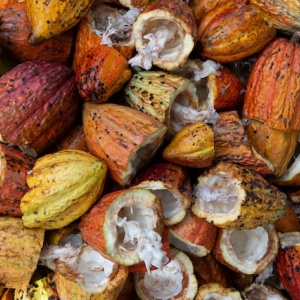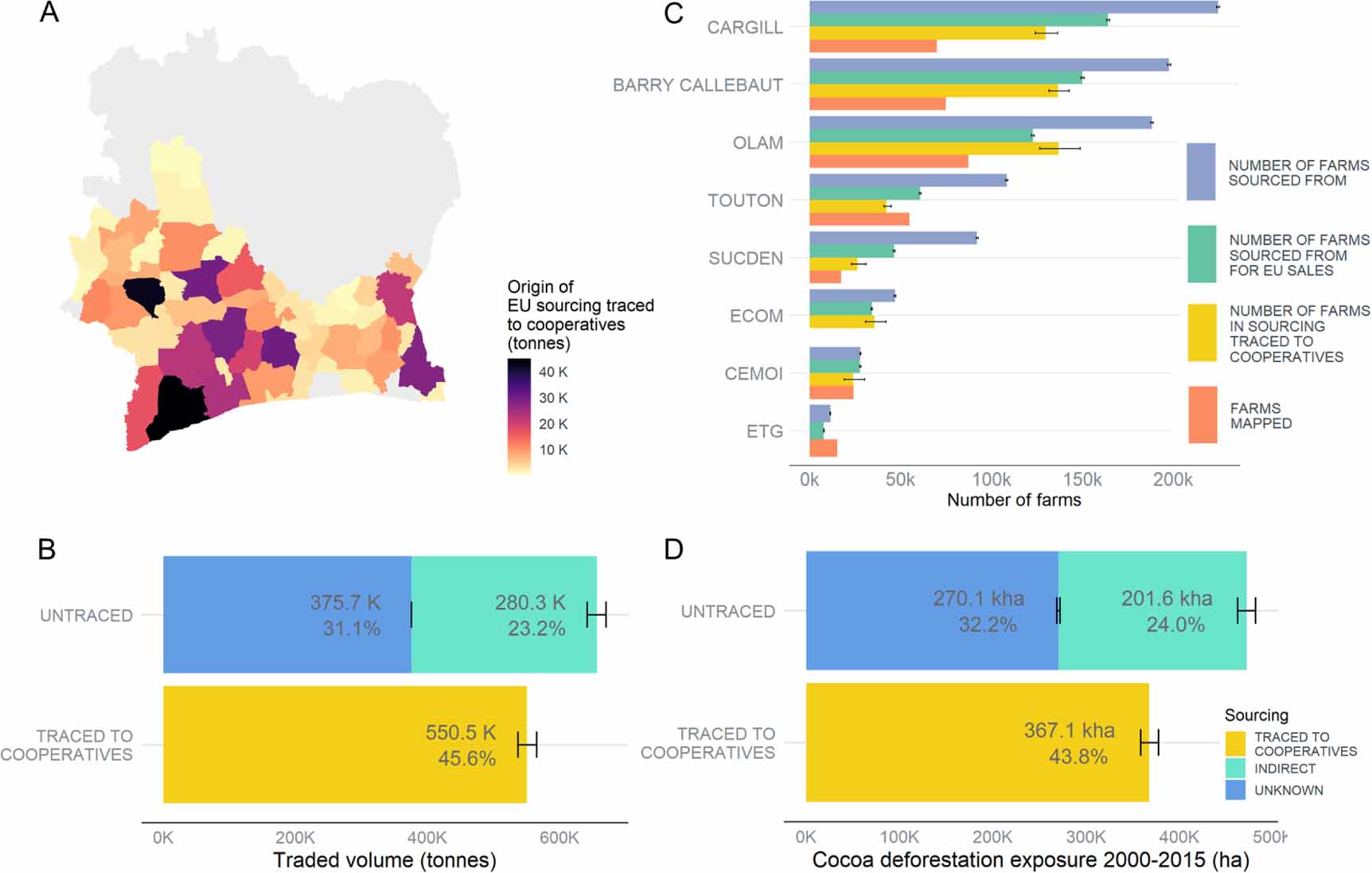
This paper used publicly-available remote-sensing and supply chain data to examine the links between cocoa production and deforestation in Côte d'Ivoire, the world's largest cocoa producer. The authors found that cocoa production has led to significant deforestation and degredation, as well as a need for greater transparency in the sector.
This paper looked to better understand the link between cocoa production and deforestation in Côte d'Ivoire, the world's largest cocoa producer, using publicly-available remote-sensing and supply chain data. The authors found that cocoa production led to 2.4Mha of deforestation and degradation (125 000 ha y−1), which accounts for 45% of the total deforestation and forest degradation in Côte d'Ivoire from 2000-2019. They also showed that the majority of Ivorian cocoa exports (at least 55%) could not be traced back to the site of production, indicating a need for more transparency in the sector to prevent further deforestation.

Image: Data for the European Union market. (A) Map of the EU sourcing traced to cooperatives per department. (B) Volume imported into the EU in 2019 by type of sourcing. (C) Comparison of the number of farms mapped by CFI traders as reported in the 2018–2020 CFI reports (orange), the estimated total number of farms they sourced from in 2019 (blue), the estimated number of farms they sourced from for the EU market (green), and the estimated number of farms in their sourcing traced to cooperatives (yellow). Note: ECOM does not disclose the number of farms mapped in Côte d'Ivoire. (D) Cocoa deforestation exposure in hectares embedded in the EU imports in 2019, per sourcing type. Error bars represent the 95% confidence interval of the estimates.
Abstract
Cocoa production has been identified as a major global driver of deforestation, but its precise contribution to deforestation dynamics in West Africa remains unclear. It is also unknown to what degree companies and international markets are able to trace their cocoa imports, and satisfy their sustainable sourcing commitments. Here, we use publicly-available remote-sensing and supply chain data for Côte d'Ivoire, the world's largest cocoa producer, to quantify cocoa-driven deforestation and trace 2019 cocoa exports and the associated deforestation from their department of origin, via trading companies, to international markets. We find 2.4 Mha of cocoa deforestation and degradation over 2000–2019, i.e. 125 000 ha y−1, representing 45% of the total deforestation and forest degradation over that period. Only 43.6% (95% CI: 42.6%–44.7%) of exports can be traced back to a specific cooperative and department. The majority of cocoa (over 55%) thus remains untraced, either indirectly sourced from local intermediaries by major traders (23.9%, 95% CI: 22.9%–24.9%), or exported by untransparent traders—who disclose no information about their suppliers (32.4%). Traceability to farm lags further behind, and is insufficient to meet the EU due-diligence legislation's proposed requirement for geolocation of product origins. We estimate that trading companies in the Cocoa and Forests Initiative have mapped 40% of the total farms supplying them, representing only 22% of all Ivorian cocoa exports in 2019. We identify 838 000 hectares of deforestation over 2000–2015 associated with 2019 EU imports, 56% of this arising through untraced sourcing. We discuss issues of company- and state-led traceability systems, often presented as solutions to deforestation, and stress the need for transparency and for the sector to work beyond individual supply chains, at landscape-level, calling for collaboration, stronger regulatory policies, and investments to preserve the remaining stretches of forests in West Africa.
Reference
Renier, C., Vandromme, M., Meyfroidt, P., Ribeiro, V., Kalischek, N. and Zu Ermgassen, E.K., 2023. Transparency, traceability and deforestation in the Ivorian cocoa supply chain. Environmental Research Letters, 18(2), p.024030.
Read the full paper here. See also the TABLE explainer What is the land sparing-sharing continuum?







Post a new comment »